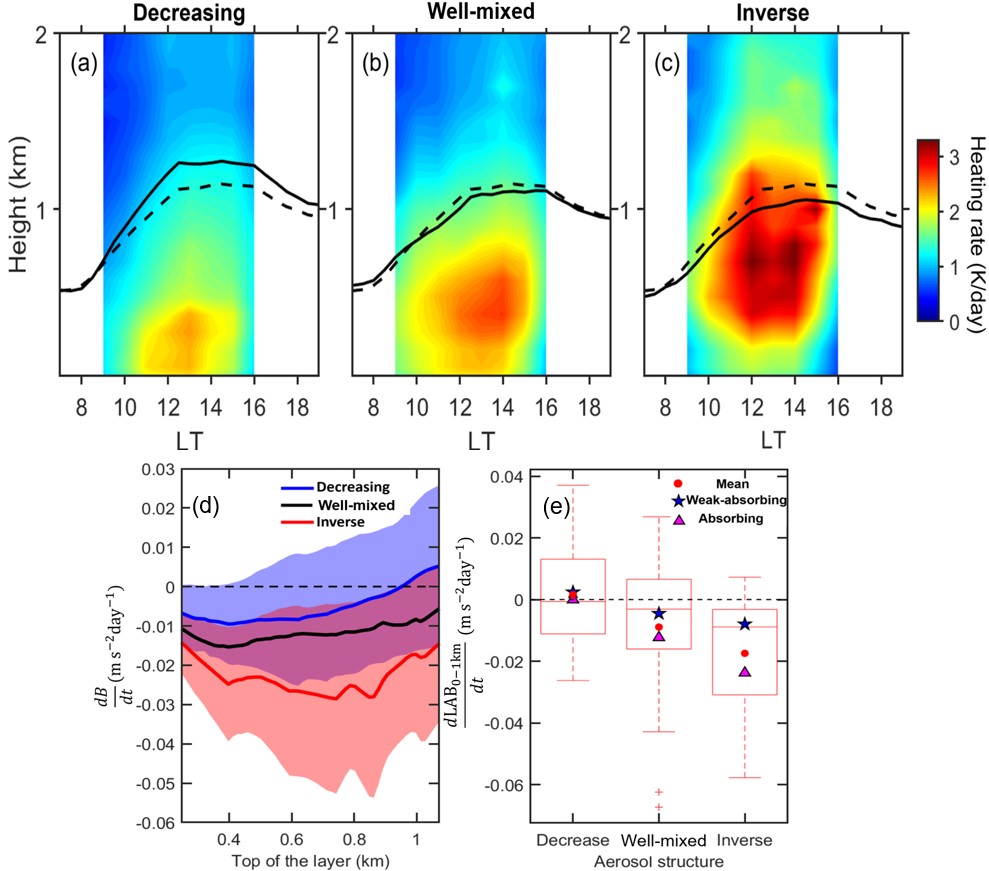The significant role of aerosol vertical structure on aerosol-PBL interactions
Submitter
Li, Zhanqing — University of Maryland
Area of research
Atmospheric Thermodynamics and Vertical Structures
Journal Reference
Science
This study addresses a critical issue in understanding the role of aerosol vertical distribution in aerosol-planetary boundary layer (PBL) interactions, which is important for estimating the impacts of aerosol on weather and climate. Based on abundant observations and radiative transfer model calculations, the significant impacts of aerosol vertical distribution on atmospheric stability and PBL development are revealed. Due to the complex vertical distribution, aerosols have different impacts on atmospheric stability at different altitudes, which can both enhance and suppress the PBL stability, further leading to both positive and negative feedback loops.
Impact
Despite a lot of progress made in understanding aerosol-PBL interactions, their magnitude and significance still have large uncertainties and vary largely with aerosol and meteorological conditions. This study investigates the roles of aerosol vertical structure on atmospheric stability and demonstrates the importance of the observational constraint of aerosol vertical distribution in simulating this interaction and consequent feedbacks.
Summary
Our study focused on the role of aerosol vertical distribution on thermodynamic stability and PBL development by jointly using micropulse lidar, sun photometer, and radiosonde measurements taken in Beijing. Aerosol structures can be largely classified into three types: well mixed, decreasing with height, and inverse structures. The aerosol-PBL relationship and diurnal cycles of the PBL height and PM2.5 associated with these different aerosol vertical structures show distinct characteristics. The vertical distribution of aerosol radiative forcing differs drastically among the three types with strong heating in the lower, middle, and upper PBL, respectively. Such a discrepancy in heating rate affects the atmospheric buoyancy and stability differently in the three distinct aerosol structures. Absorbing aerosols have a weaker effect on stabilizing the lower atmosphere for the decreasing structure than for the inverse structure. As a result, the aerosol-PBL interaction is strengthened by the inverse aerosol structure, and can be potentially neutralized by the decreasing structure.


